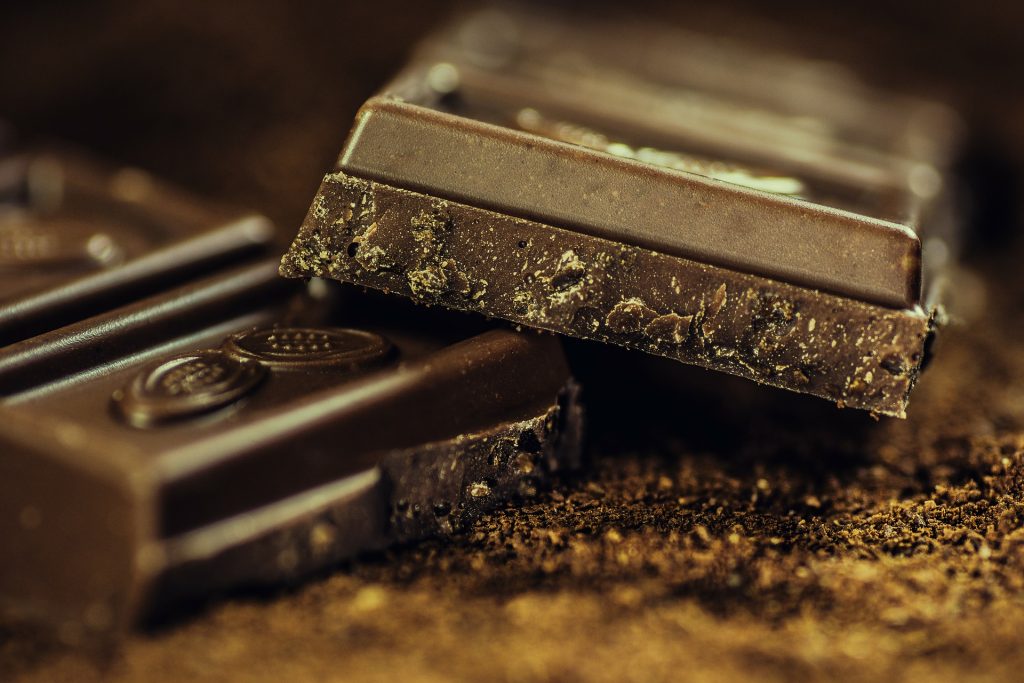 It is known that the neurotransmitter GABA is responsible for decreasing excitatory activity in the brain of humans and other animals. When GABA is released from neurones, it activates GABAA receptors and this causes the opening of chloride channels of adjacent neurones. The opening of these channels decreases membrane potential, reducing the chance that the neurone with fire an action potential. The overall effects of GABA on the brain are therefore inhibitory, and in practical terms this may have significant anti-anxiety effects. Activation of the GABA system by use of pharmaceutical drugs such as the benzodiazepines is known to have a similar inhibitory effect, which explains their therapeutic effect in the treatment of anxiety. Dietary sources of GABA include tea, and fermented products such as yoghurt, misu and sourdough bread. Dietary supplements of GABA can also be taken as a powder or a capsule. However, it is not clear how much dietary GABA is able to cross the blood brain barrier to enter the brain.
It is known that the neurotransmitter GABA is responsible for decreasing excitatory activity in the brain of humans and other animals. When GABA is released from neurones, it activates GABAA receptors and this causes the opening of chloride channels of adjacent neurones. The opening of these channels decreases membrane potential, reducing the chance that the neurone with fire an action potential. The overall effects of GABA on the brain are therefore inhibitory, and in practical terms this may have significant anti-anxiety effects. Activation of the GABA system by use of pharmaceutical drugs such as the benzodiazepines is known to have a similar inhibitory effect, which explains their therapeutic effect in the treatment of anxiety. Dietary sources of GABA include tea, and fermented products such as yoghurt, misu and sourdough bread. Dietary supplements of GABA can also be taken as a powder or a capsule. However, it is not clear how much dietary GABA is able to cross the blood brain barrier to enter the brain.

There is evidence that dietary GABA does not have to cross the blood brain barrier to have beneficial effects against anxiety. However, GABA levels may also be able to be increased through non dietary means. For example, in one study, researchers instructed a group of individuals to undergo yoga sessions, while another group did a matched amount of exercise that consisted of walking. The yoga subject reported significantly greater elevations in mood and significantly greater decreases in anxiety compared to the walking group. In addition, thalamic GABA levels were correlated with the improvements in mood, suggesting that the yoga had increased GABA levels in the brain, and this may have been responsible for the reduction in anxiety experienced by the subjects.
Initially it was thought that GABA was not able to cross the blood brain barrier. However much of this evidence came from animal models and its relevance to humans is not known. Very few studies have been performed on humans, and this relates to the ethical and practical problems with measuring GABA levels in brain tissue. Evidence suggests that there are GABA transporters in the blood brain barrier suggesting that GABA does cross the blood brain barrier. However, it has been shown that there is a large efflux of GABA from the brain to the periphery, which may be 17 times higher than the influx of GABA from the periphery to the brain. Therefore the studies that have measure the ability of GABA to cross the blood brain barrier, may have significantly underestimated the ability of the GABA to reach the brain. Based on the evidence to date, there is therefore some evidence that GABA does reach the brain from the blood, and in many cases the amount that enters the brain may have been underestimated.
Foods containing GABA and dietary GABA supplements may therefore reach the brain, and this may make them therapeutically useful tools to treat anxiety. Certainly there is a large amount of anecdotal evidence that GABA supplements cause a reduction in anxiety. There is also some scientific evidence that dietary GABA is able to induce calming effects. For example, in one study, mice were administered GABA from fermented rice germ and also administered caffeine. Compared to control animals that received just the caffeine, the GABA treated mice experienced a normalisation of their sleep patterns that were disrupted by the caffeine. Therefore GABA appears to have a calming effect in mammals. However, does the dietary GABA have to cross the blood brain barrier to be effective? It is known that enterocytes possess GABA receptors, and increasingly it is being demonstrated that signals from the gut can be relayed from the gut to the brain via the vagal nerve. Could this mechanism explain the effects of dietary GABA?

Another mechanism that may be useful in the activation of the GABA system is the use of dietary flavonoids from foods such as tea, red wine, berries and chocolate. These compounds may directly activate the GABAA receptor and elicit anxiolytic effects.
One study administered Lactobacillus rhamnosus to mice and the researchers observed increases in the synthesis of GABA receptor subunits in enterocyte cells. It is known that Lactobacillus bacteria are able to synthesise GABA from glutamic acid when they undergo fermentation. The researchers also observed that the mice administered the Lactobacillus also displayed lower levels of anxiety and depressive symptoms compared to controls. Further, the mice administered the Lactobacillus bacteria also had lower levels of cortisol. However, when the vagal nerve was severed, none of these effects were apparent. This suggests that the effects of the GABA, synthesised in the guts of the mice, may have been relayed to the brain through the vagal nerve. Dietary sources of GABA and GABA supplements may therefore not require passage across the blood brain barrier in order to have an effect in humans. Consumption of probiotics may also therefore be another route by which anxiolytic effects may be obtained.
Eat Well, Stay Healthy, Protect Yourself
RdB
